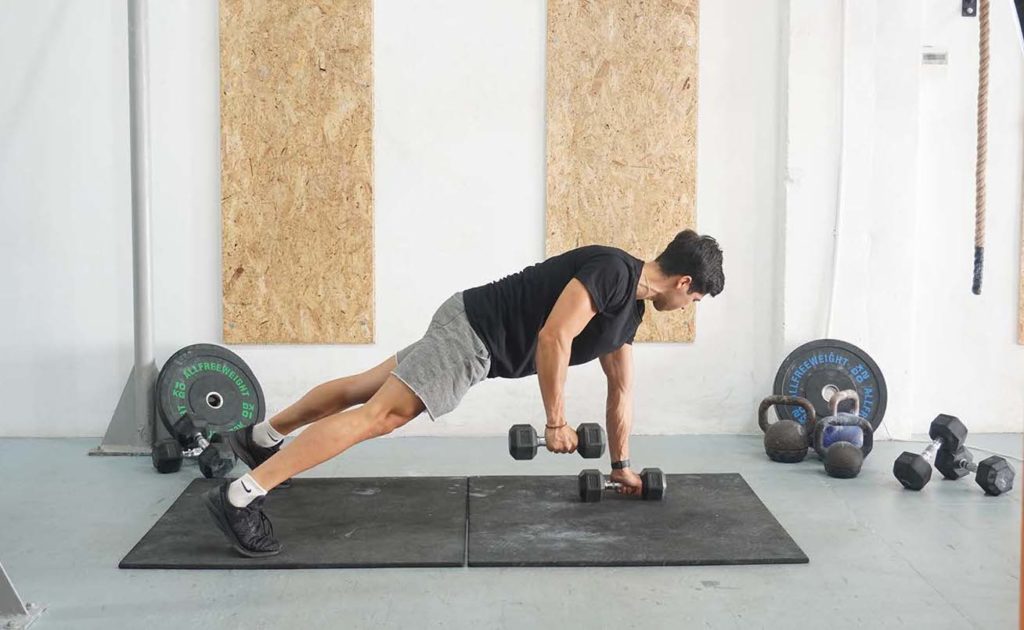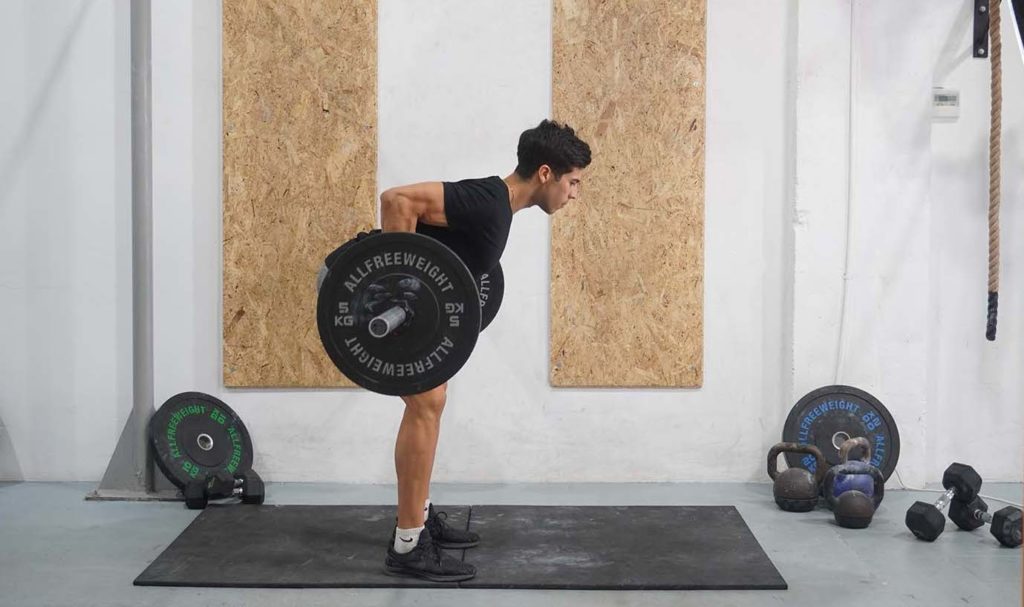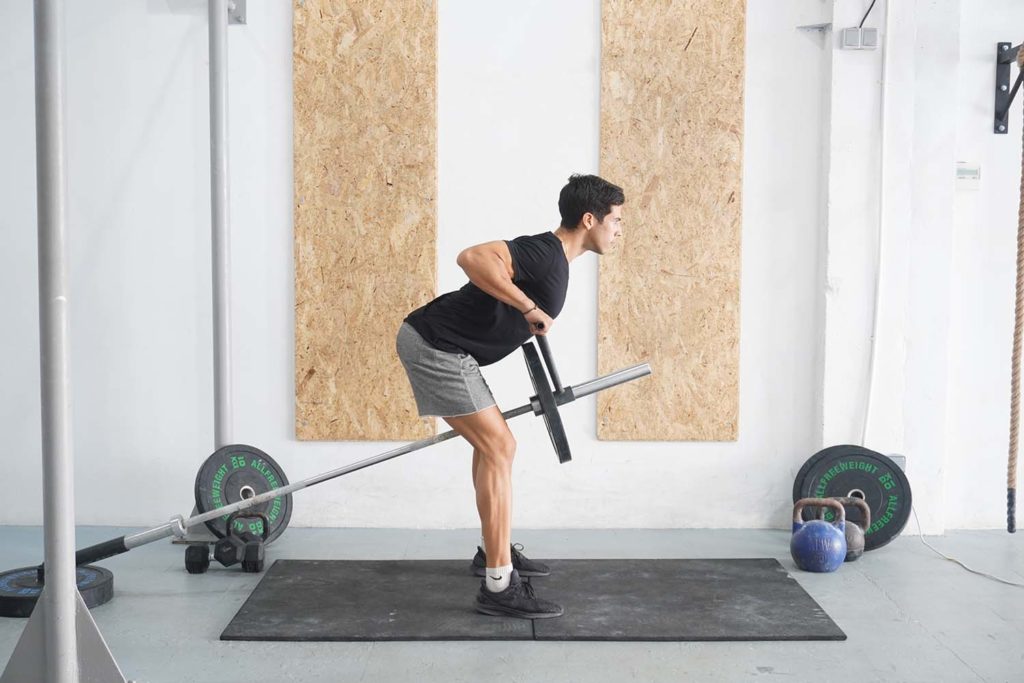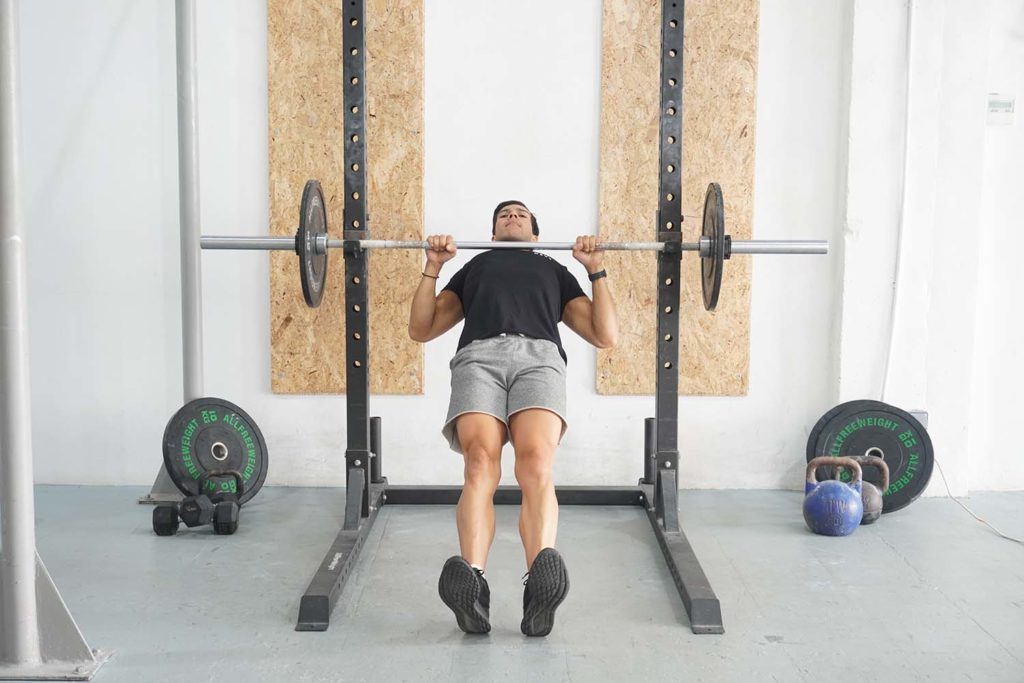The Full Body Benefits of the Renegade Row with a Dumbbell
The goal with Renegade rows is to assume a push-up position while holding onto a pair of dumbbells (preferably, hexagonal ones). Once in place, you have to support your body on one arm and row the opposite dumbbell.
Thanks to its level of difficulty, the Renegade row is a fantastic tool you can use to strengthen your entire body, build your back, and develop your biceps. First, the movement strengthens your back and emphasizes your lats. Similarly, Renegade rows work your biceps. Second, maintaining a push-up position forces your midsection to work extra hard. As a result, you build whole-body strength and improve your stability.
As a gym exercise, Renegade rows are more functional than many exercises precisely because you develop core strength while building your back. Doing so is beneficial for reducing the risk of injury, improving sports performance, and making everyday tasks easier to handle.
How to do a Renegade Row

- Set a pair of kettlebells or hexagonal dumbbells parallel to one another and at a distance where you can grab them and perform push-ups. It might take a bit of adjusting to find the proper width.
- Get down and grab both kettlebells firmly. Extend your legs to straighten your body, and bring your chest out. Your arms and body should be straight. Your wrists, elbows, and shoulders should be in a straight vertical line.
- Space your feet out a bit for better balance and engage your glutes.
- Shift your weight slightly to the left, where your left arm supports you more.
- Take a breath and row the right kettlebell as you keep your body stable.
- Pull until your elbow is in line with your torso and hold the contraction for a moment.
- As you exhale, lower the kettlebell to the starting position.
- Take another breath and repeat.
- Once you’re done with your right arm, shift your weight to the right and row the other kettlebell with your left side.
What muscles does a renegade row with a dumbbell activate?
The primary muscle group that works during Renegade rows is our latissimus dorsi (lats). Our lats are the largest muscle in the upper body and play an essential role in torso stability and pulling motions (1). Similarly, our biceps contribute because their primary function is elbow flexion (bending) when we pull a dumbbell to our torso (2).
Our entire core musculature works isometrically to maintain torso rigidity and keep us in position. Specifically, the erector spinae, rectus abdominis, transverse abdominis, obliques, and glutes allow us to maintain a straight body.
Trapezius, infraspinatus, rhomboids, rear deltoids, and other upper back muscles also contribute to Renegade rows. Their primary job is to keep our shoulder blades retracted while we do the movement.
The chest (pectorals), triceps, shoulders, and serratus anterior also contribute during the exercise. For example, our triceps keep the supporting arm straight, and the serratus anterior contributes to scapular protraction while lowering the weight (shoulder blades forward) (3).
Tips on Proper Form when doing a Renegade Row
One of the most important tips to keep in mind for Renegade rows is using hexagonal dumbbells. Such dumbbells provide a steady surface, whereas round weights can roll away and make the movement dangerous.
Your torso position will also play a role in how well you can do Renegade rows. Specifically, you have to tilt your weight slightly to one side, thus freeing up your other arm. Not doing that would prevent you from maintaining your stability and doing effective repetitions on the exercise.

Using a full range of motion is also crucial for Renegade rows. You have to row the dumbbell until your elbow is at torso level or slightly higher, hold the position for a moment, and extend your arm on the way down. Doing so will make each repetition more effective, allowing you to stimulate your muscles for growth.
Variations and Modifications of the Renegade Row with a Dumbbell
1. Renegade Row With Push-Up
Renegade rows with a push-up is the most common variation of the exercise. Instead of only doing rows, you include push-up repetitions to train your chest, shoulders, and triceps (4). You can use the following sequence:
Row (left arm) ⇒ Row (right arm) ⇒ Push-up ⇒ Repeat
2. Renegade Rows With One Elevated Leg
Doing Renegade rows with one elevated leg is a perfect exercise if you want to take your core training to the next level. The goal is to assume the push-up position but raise one foot off the floor. Doing so makes it much more challenging to maintain stability, forcing your core to work extra hard.
3. Knee-Supported Renegade Rows
The knee-supported Renegade row is an excellent variation for beginners to the movement. Instead of straightening your entire body, you support yourself on your knees and maintain a straight line between your knees, hips, and shoulders.
Mistakes to Avoid
The most common mistake related to Renegade rows is using too much weight. Trainees often try to use the same dumbbells they would work with on bent-over rows, which is a mistake. Remember that Renegade rows add a layer of difficulty to the equation, so start with a pair of light dumbbells to ensure proper form.
Another mistake with Renegade rows is pulling the dumbbells to your chest. Doing so forces your biceps and shoulders to work extra hard while reducing the tension in your back. Instead, keep your elbows close to your body and bring the dumbbell to the side of your hip.
The third significant mistake with Renegade rows is using too much momentum to lift the weights. In their effort to maintain stability, many people rush through the repetitions, only focusing on moving the dumbbells from point A to B. Avoid the error by being mindful and rowing correctly, even if it means doing fewer reps.
Similar Exercises to the Renegade Row with a Dumbbell
Barbell Row

Barbell rows are an effective compound exercise for the back, core, biceps, and forearms. The premise is simple: Grab a barbell, bend forward, and begin rowing the weight. Pull the barbell to your stomach and extend your arms. Like Renegade rows, the barbell row offers a good range of motion, trains your back well, and develops your core.
T Bar Row

Like barbell rows, the T bar row is an effective compound movement with an excellent overloading potential and a good range of motion. The primary difference is, you have to use a T bar station or landmine attachment on a standard barbell to do the exercise.
Inverted Row

Inverted rows are a bodyweight back exercise. The goal is to set a bar at hip height or slightly higher, grab it, and position your body in a somewhat horizontal position. With your heels on the floor, pull yourself to the bar, hold for a moment, and extend your arms.
